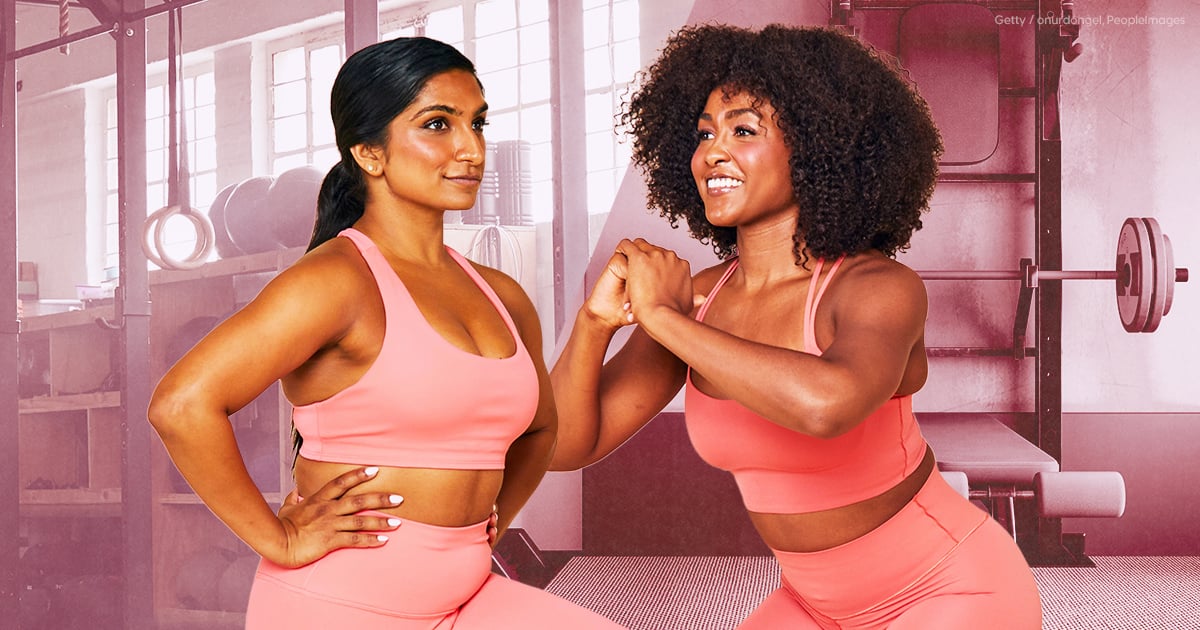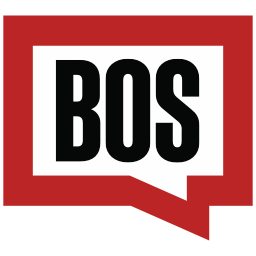Fitness
Calisthenics Is Having a Renaissance. Get to Know the Simple but Effective Training Style.

A flag pole isn’t just the thing Flick gets his tongue stuck on in “A Christmas Story,” a gathering point at day camps, or a place to hang a Pride flag in June — it’s also an exercise making the rounds on social media. More specifically, a calisthenics exercise. Even if you don’t quite know what calisthenics is, exactly, you’ve probably seen it in action. The training method has been around for a long time now, and sounds fancy, but is quite simple — and it’s booming in the aftermath of the COVID-19 pandemic and in the era of TikTok.
What is calisthenics, what exercises does it include, and what are the benefits of it? Answers to all your questions ahead.
What Is Calisthenics?
Put simply, calisthenics is bodyweight training. “It’s a form of strength training that uses the combination of your own body weight and gravity to strengthen your muscles and build muscle endurance,” explains Jamie Simmonds, a personal trainer, CrossFit Level 2 coach, and six-time CrossFit Games Athlete with Reebok. It can also improve mobility, flexibility, balance, coordination, and even improve aerobic capacity, she says.
Calisthenics is both a training methodology and a sport with its own competitions (think: like CrossFit); however, the vast majority of people who do calisthenics never compete, instead incorporating the method into their everyday workouts.
Calisthenics Exercise Examples
When you think of bodyweight exercises, you likely think about classic moves like push-ups, pull-ups, squats, and lunge.s And, these exercises — alongside other popular bodyweight options like the dip, jumping jack, burpee, and plank — do make a common appearance in calisthenics workouts, Simmonds says.
However, there are other exercises seen in the training protocol that are more specific to calisthenics, too. To name a few: The flag pole, muscle-up, single-leg squat, and handstand press. (Often, it’s seeing these fancy, high-skill moves on social media that propel people to give the training style a try in the first place.)
@laura.crossfitness Nod of approval in the gym feels like the biggest compliment ever 👌😅 #calisthenics #motivation #calisthenicswomen #fyp
♬ original sound – nnmi/char
The History of Calisthenics
Sure, you may have just started to see calisthenics on your social feeds in the last few years. But using one’s own body to build muscle is nothing new. “Calisthenics can be traced all the way back to ancient Greece, where the training methodology was used by warriors to enhance their ability in sport and combat,” Simmonds says. The word “calisthenics” is a combination of two Greek words: “kallos” (meaning, beauty) and “sthenos” (meaning strength).
In the centuries since, the training methodology has been used and further developed by a wide variety of people and cultures. In the 19th century, for instance, calisthenics gained exposure in Europe alongside the popularization of gymnastics and was promoted in the US by educator Catherine Beecher as being important for women, according to Britannica. Then, in the 20th century, it began to be integrated into schools as part of gym classes and physical education (PE) courses, Simmonds says.
These days, there’s a lot of crossover between gymnastics (which came first in history) and calisthenics, Simmonds says. Being able to control your body in space is essential to both methodologies and as a result, many of the movements in calisthenics are similar to (or derivatives of) the movements that have long been a part of gymnastics.
Why Is Calisthenics Booming Right Now?
Calisthenics may have been around even longer than “The Bachelor” franchise, but as anyone with a social media account knows, it’s having a moment now. At the time of publishing, posts with the #calisthenics hashtag have garnered more than 25.9 billion views on TikTok. There are a few reasons for this, according to fitness experts.
“There are no prerequisite levels of strength to start calisthenics. All you need is a body.”
For starters, you don’t need any gym equipment or a gym membership to get started, says certified strength and conditioning coach Jake Harcoff, CSCS, head coach and owner of AIM Athletic. This low barrier to entry makes the movement practice accessible to everyone in a way that things like bodybuilding and Olympic lifting are not.
This is especially true since the start of the COVID pandemic, as people have sought more at-home workout solutions that allow them to get their sweat on without entering crowded spaces, Harcoff says. At this point, many people have renewed their gym memberships, but many people have come to prefer the convenience of working out from home, or aren’t able to risk the germ exposure.
There’s also “a growing appreciation for fitness routines that prioritize longevity and functional health, rather than just aesthetics,” Harcoff says. Calisthenics can help you reach aesthetic and/or weight loss goals if you have them, but unlike other fitness practices, that isn’t its main claim to fame — improved strength, mobility, agility, and longevity are, he says.
“Social media platforms like TikTok and Instagram have also played a significant role in the popularization of calisthenics,” Harcoff says. “The often visually captivating feats of strength showcased by those who practice calisthenics on these platforms can be incredibly motivating and entertaining, contributing to its overall appeal.”
You’ve likely seen people doing advanced moves like handstands, one-handed push-ups, or flipping around pull-up bars in the park, like below. Given that calisthenics thrives on jungle gyms, there’s also something very playful about the workout method. This is exactly what many people need right now, as they’re looking for their workout routine to spark joy rather than become a chore.
The Health and Fitness Benefits of Calisthenics Training
There are practically more health and fitness benefits associated with calisthenics training than there are social posts featuring people doing it — which is to say, there’s a lot. To name a few:
1. There’s no equipment necessary.
Once more for the people in the back: Calisthenics can be done (almost) anywhere, anytime. “No gym equipment or gym membership is needed,” Harcoff says. And you don’t need much space. Whether you’re in a hotel room or in the airport, on the beach or in the park, you can give calisthenics a try. This accessibility makes the modality especially appealing to those who travel a lot or prefer to work out from home.
2. It’s totally free.
Oh, and because no gym equipment or membership is needed, there’s absolutely no cost associated with calisthenics. You don’t even need a special pair of shoes to get started, the way you do with running. The fact that it’s cost-free means people who can’t afford a gym membership, equipment, or even regular child care may be more able to give it a try.
3. It’s a full-body workout.
“Calisthenics works all the muscles in your body, including on your legs, glutes, core, and upper body,” Simmons says. But calisthenics doesn’t just work these muscles, it works them through a large range of motion — more so than in other sports, she says. Because you can’t make an exercise harder by adding weights, you may make it harder by going deeper into the move. (For instance, squatting as close to the ground as you can.) As a result, you work a greater portion of the fibers in your muscles than you would with a smaller range of motion, helping to increase the challenge and therefore your results. “You’ll also strengthen your other connective tissues, such as your ligaments and tendons, which can help with joint stability and strength,” Simmons says.
4. It builds functional strength.
“Calisthenics emphasizes what most would consider functional strength, or one’s ability to perform everyday activities and sports through compound movements that mimic real-life actions,” Harcoff says. Indeed, the methodology prioritizes functional movement patterns, like the squat, hinge, pull, push, lunge, and rotation.
When you master the ability to execute these movement patterns safely during your exercise routine, you groove the movement pattern so that you’re more likely to do it safely when you have to in real life.
5. It improves stability.
In order to access the strength in your limbs, your body has to call on your core, too. As a result, of all the muscle groups that calisthenics works, it works your midline the most. And having a strong, stable core offers its own set of health and fitness benefits, according to Harcoff.
“A strong core helps stabilize the spine, improve posture, and enhance balance and stability,” he says. It also plays a crucial role in preventing lower back pain, as well as decreasing the risk of injury from day-to-day tasks like throwing a ball, picking up Amazon packages off the front porch, transferring the laundry, and getting out of bed.
How to Get Started With Calisthenics
Want to join the likes of TikTok and give calisthenics a try? Good news: You can. “There are no prerequisite levels of strength to start calisthenics,” Simmonds says. “All you need is a body.”
1. Master the basics.
“Simple bodyweight movements like the squat, lunge, push-up, sit-up, pull-up, and plank are all foundational to the sport,” says Simmonds. While they may not be as sexy as some of the other calisthenics moves, no matter your training age or strength level, she suggests starting there.
To be clear: You don’t just want to be able to do these foundational bodyweight exercises, you want to be able to do them well. That means making sure all the muscles that should be engaged are engaged.
2. Increase the difficulty.
“Once you have the basics down pat, you can build the difficulty with increased reps or slow the tempo or even increase your range of movement,” says Simmonds. This approach is known as the progressive overload principle and is essential for continuously challenging yourself, so you can keep making gains.
3. Work with a professional trainer.
If the basics are new to you — or you’re looking to graduate to more advanced movements — Simmonds suggests working with a fitness professional. “It can be helpful to have someone with experience check your form and give you instructions,” she says.
4. Take classes.
Did you know that there are a wide variety of online and in-person calisthenics classes? “These are a lot of fun and allow you to have someone guide you through the levels of calisthenics and ensure you are moving correctly,” Simmonds says.
Looking for a place to start? The School of Calisthenics, Mad Muscles, Bar Brothers, and Online Calisthenics are all good online options for people of all abilities. You can also find calisthenics programs in more general workout apps like Centr or Sweat.
Image Sources: Photo Illustration: Aly Lim and POPSUGAR Photography / Chaunté Vaughn

Fitness
Best Rowing Machines of 2024 – CNET

When using a rowing machine, it’s key to practice good form if you want to get the most out of the workout. It’s helpful to have a rowing instructor or trainer familiar with the machine to teach you the correct way to row.
Catch, Drive, Recovery: It’s important to learn the four key steps to rowing. These are the catch, drive, finish and recovery. Peloton rowing instructor, Alex Karwoski says your starting position should look like this: “Starting from the fully compressed position — your arms should be outstretched, body pivoted forward at a slight angle, and knees close to your chest.” From here you want to push with the legs to drive the seat and handle away from the screen. Karwoski explains, “for the first third to half of the drive, our legs are doing the majority of the work while our arms and body are braced and holding the pressure.” Then, as the shins come to about 45 degrees to the floor, the body swing starts. He says the key to the body swing is to think about “adding momentum” to the handle. The legs started moving the internal flywheel, and this is where the legs and body can work in conjunction to further accelerate the flywheel. “Finally, our arms get involved right at the end of the stroke and we pull the handle all the way into the chest,” he says. Once all of that is completed, you start the recovery phase of the stroke, which is just the opposite and the arms move away from the body first, followed by the body pivoting forward, and the legs compress to return to the catch.
Don’t misuse the drag factor: The drag factor is usually featured as a dampener handle on a traditional rower. On more modern rowers, such as some of the ones mentioned on this list, it’s included within the software. “Most people assume that moving this from, for example, the three to the 10 makes the machine harder, but what is really does is simply increase the rate at which the flywheel slows down and thereby causes the stroke to feel heavier because now it is as if you are rowing through molasses rather than water,” explains Karwoski. In other words, avoid mistaking the “drag factor” for “speed level” or “intensity.”
Know what the main measurement is: The main unit being measured when you row is output. Karwoski explains that when you row, each stroke takes a certain amount of time so the work being measured is the force applied to move the flywheel. He says, “from the output, we can derive the split, which is given in terms of time it would take to row 500 meters at your given output and distance.” Another metric to look at is the stroke rate, which is the number of strokes you will take, if you hold your current rhythm, in a minute. ”I encourage people to focus on output because that is the big number usually right in the middle of the screen,” Karwoski said. But keep in mind that different rowing machines have different metrics that are highlighted, but ultimately it’s about how much force you can apply through the drive to move the flywheel.
Rowing precautions: As with any form of exercise, it’s important to get clearance from your doctor if you have health concerns or are pregnant. “If you are returning from an injury — and that injury doesn’t prohibit you from sitting on a rowing machine — the rowing motion can be a gentler way to restart your cardiovascular fitness,” said Peloton rowing instructor Katie Wang. This is a good way to get the benefits of a cardio workout while caring for your joints and knees.
Fitness
Gut health: Exercise, fermented food, sleep are crucial steps to strengthen your microbiota

Fitness
Arnold Shares 'Unseen' Exercise From ‘Pumping Iron’ – Muscle & Fitness

Arnold Schwarzenegger’s 1977 Pumping Iron docudrama has served as a blueprint for aspiring bodybuilders for almost 50 years, so to find out that there is never-before-aired footage, complete with a rare glimpse into Arnold Schwarzenegger’s Side-Lying Dumbbell Raises exercise from the film is epic news. That’s exactly what happened on May, 17, 2024, when the seven-time Mr Olympia took to Instagram to share all.
The Austrian oak is seen in retro footage, believed to have been omitted from the original cut of Pumping Iron, wearing a yellow tank top that reminds us just how solid Schwarzenegger really was in his heyday. “Here is some unseen footage from Pumping Iron what was in my archive,” explains the icon. In the video, Arnie is performing what he calls “side-lying dumbbell raises.” You may also know them as side-lying lateral dumbbell raises.
How to perform Arnold Schwarzenegger’s Side-Lying Dumbbell Raises
- Lie on one side, on a bench and place the dumbbell on the floor by your side
- Pick up the dumbbell with the opposite arm to the side that you are lying on
- With your elbow bent, raise the dumbbell to the ceiling, then back downwards, and repeat
“I love to do side-lying dumbbell raises,” he continues. “I don’t see many people doing them anymore, but they are a fantastic deltoid pump!” Indeed, this move is great for deltoid development as it focusses on the shoulder muscles, especially the deltoids. By lying to one side, the deltoids are isolated, limiting the recruitment of other muscle groups. “Oh year, these are sweet,” commented muscle building expert, Jeff Nippard on seeing the pumping post.
Incorporating side-lying dumbbell raises into your regular gym routine may enhance shoulder strength, improve muscular imbalances thanks to the side-to-side sets, and also contribute to the gaining of more mass in the upper body. As with all exercises, remember not to overload the joints with too much weight, so start low and go from there. Start out with a set on each side for 10 reps and gradually progress. It seems our thirst for knowledge at the hands of one of the greatest bodybuilders may never be truly quenched. “Make an unreleased film,” joked one IG fan, speaking for all of us.
For more of Arnold’s tips and tricks visit the Arnold Pump Club!
-

 Politics1 week ago
Politics1 week agoVulnerable Dem incumbents move to the center in key swing states as Biden panders to far-left base
-

 World1 week ago
World1 week ago‘Monstrous crime’: World reacts to attack on Slovakia’s prime minister
-

 News1 week ago
News1 week agoHow a migrant aid group got caught up in a right-wing social media thread : Consider This from NPR
-

 Politics1 week ago
Politics1 week agoSouthern border migrant encounters decrease slightly but gotaways still surge under Biden
-

 World1 week ago
World1 week agoSlovakia PM Robert Fico in ‘very serious’ condition after being shot
-

 Movie Reviews1 week ago
Movie Reviews1 week agoGuruvayoor Ambalanadayil movie review: This Prithviraj Sukumaran, Basil Joseph-starrer is a total laugh riot
-

 World1 week ago
World1 week agoTaiwan grapples with divisive history as new president prepares for power
-

 Movie Reviews1 week ago
Movie Reviews1 week agoIs Coppola’s $120M ‘Megalopolis’ ‘bafflingly shallow’ or ‘remarkably sincere’? Critics can’t tell













